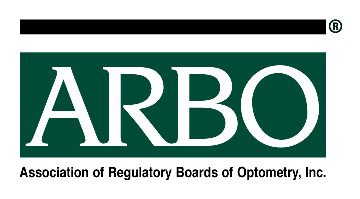There has been much discussion about the role of regulatory boards in optometry. We all know the primary mission of any regulatory agency is to protect public health and welfare through enforcement of the practice act. However, it seems that outside influences are attempting to change that mission and create broader responsibilities that do not line up with standard regulatory principles and policies.
How do you define ‘public’?
It has been stated by some state regulatory board members that, “everyone is the public”. The problem with this definition is that it renders regulatory boundaries virtually limitless, which opens the gates of outside influence. This leaves the board not only more vulnerable to regulatory capture but also nearly impotent to keep up with such a broad scope of responsibility.
The ‘public’ in an optometric regulatory setting are those patients under the care of an optometrist. It is that segment of the population (public) that we are responsible for.
Normally, when the point is made that, “we are all the public” it tends to refer to a very specific subset of people…and often comes with an agenda. This is a classic symptom of regulatory capture – that is, to expand or distort the definitions so that the board may be more susceptible to outside non-regulatory influences.
This is easy to do because we are voluntary regulators, it’s not our day job, and it can be very difficult to separate the various roles we play in our profession: optometrist, regulator, optometric advocate, and public protector. This makes us susceptible to outside non-regulatory influences that may want to change the system to their advantage. Most often these influences are friends, colleagues, and people we respect in leadership roles, and as a result, it is easy to be influenced by the relationship.
There was a time when regulators, leaders, legislators, and advocates would wear all their hats at the same time. This was/is called the ‘good ‘ol boy’ system. This system did not always follow accepted regulatory principles or policies. Government entities such as regulatory boards are increasingly being called to task and must prove their effectiveness to both the public they serve and the government who appointed them. The good ‘ol boys are increasingly being exposed as an impediment to proper governance and public welfare.
Remember, we are optometric regulators, which means we are public members of our board with optometric expertise. Remember also, who your ‘public’ is. The public you are responsible for are those patients being seen by optometrists licensed in your State or Province.
Are Regulatory Boards Responsible for Access to Optometric Care?
Healthcare regulatory principles assume a relationship between a provider and a patient. If an optometrist never sees a patient, then there is simply no patient to protect. However, here again, is where the definitions may become artificially broadened to satisfy other non-regulatory entities: Are state and provincial boards responsible for making sure patients have access to care?
For example, let’s take two people who have developed blindness.
Person #1: Lives in a rural area with very limited access to healthcare. This person had no access to eye care and developed a vision-threatening disease and lost vision permanently.
Patient #2: Has access to optometric care and developed the same disease. This person also went blind due to the optometrist’s misdiagnosis, mistreatment, and/or mismanagement.
Both scenarios are tragic. However, are regulatory boards responsible for both patients? A regulatory board has jurisdiction and authority over the optometrists licensed in their state or province. In other words, if there is no optometrist involved, there is no authority. Regulatory boards do not have the authority to dictate or direct workforce shortages or demographics – it’s simply not their mission or responsibility.
Improving access to eye care is much needed in rural and isolated communities. Professional advocacy groups have long worked to address these issues of access – and due to their efforts, access to eye care has greatly improved, but much work is still needed in this area. The point here is that access to eyecare is not the responsibility of regulatory boards. Entities that attempt to influence boards to take on this burden can distract from a board’s true mission which is considered regulatory capture.
It goes without saying that the role of a regulator can be challenging given that we are human and come with our own individual experiences and biases. However, understanding a regulatory board’s mission, authority and jurisdiction will help to maintain focus and be true to your responsibility as a board member.
